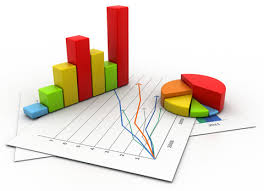
- Agricultural Statistics
- Livestock Statistics
- i. The livestock census conducted quinquennially by the DES constitutes the principal source of data on livestock and poultry populations and their composition.
- ii. The responsibility for collecting data for the livestock census rests with the State Governments. In rural areas, the data are collected by the normal revenue agencies, if such agencies exist. In places where there are no revenue agencies, village chowkidars, school teachers or panchayat employees are asked to collect data. In urban areas, the data are collected by the sanitary staff of the municipalities. Enumerators complete all preliminary work, e.g. listing of households, contacting household heads, etc., 15 days or one month prior to the reference date (usually 15 April). The count of livestock is considered final only after the enumerator visits the household on the reference day, and the final data relate to the animals actually found living at sunrise on this day. The States furnish tehsil-wise figures on number of livestock, poultry, agricultural machinery and implements, fishing crafts and tackles to the DES. The DES compiles the data received from the States and publishes them in the Indian Livestock Census (quinquennial), a report in two volumes. Vol. I gives all-India and State-wise figures while Vol. II gives district-wise details. The rural and urban break-up of the data is also available in both the volumes. There is considerable time lag between the census and the publication of results. Provisional figures are, however, published in the Agricultural Situation in India (monthly). Each State also brings out its own Livestock Census Report, giving tehsil-wise data for the State.
- iii. The position regarding the statistics on livestock products, however, is not at all satisfactory. Till the late fifties, the only available information on the production of major livestock products, viz. milk, ghee and other milk products, meat, poultry, eggs, wool, bones, bristles, etc., came from marketing surveys carried out by the Directorate of Agricultural Marketing and Inspection (DAMI) from time to time. As the surveys were not based on sound statistical methods, the data could not be considerable reliable. Some estimates of milk production are now prepared by the DAMI during each livestock census, which are presented in the CSO publication Statistical Abstract, India (annual). The NSSO also collects data on the quality and value of livestock products in some of the rounds.
- iv. A few States, e.g. U.P., Gujarat and Maharashtra, have been conducting since the Fourth Plan period sample surveys for the estimation of the production of milk, eggs and wool every year based on survey techniques developed by the Institute of Agricultural Research Statistics. In the Fifth Plan period, the Union Department of Agriculture sponsored a scheme to enable the States to initiate sample surveys for estimation of production of all major livestock products on a continuing basis. So currently a system has been developed in all the States for collecting reliable statistics on livestock products year after year.
- Fishery Statistics
- i. For the purpose of collection of statistics, fish production may be considered in its two aspects:
- Production of marine (or sea) fish and
- Production of inland (or fresh-water) fish
- ii. Estimates of marine fish production are being furnished annually since 1950 by the Central Marine Fisheries Research Institute (CMFRI). The CMFRI obtains, for each maritime State, information regarding total landings of marine fish by mechanised and non-mechanised boats and their variety-wise composition, the man-power used, the type of net used, etc., on the basis of sample surveys. In the case of landing by trawlers, the information on catches is obtained through complete enumeration. In this way, State-wise estimates of catches of fish are provided each month. The maritime States also make independent surveys to estimate making fish production but their estimates often vary considerably from those worked out by the CMFRI. The Indian Journal of Fisheries (half-yearly), issued by the CMFRI, sometimes publish figures of marine fish production as estimated by the CMFRI.
- iii. As regards inland fish production, no direct estimates are available. Until 1960, the Fishery Development Adviser (FDA) was giving very rough indirect estimates. Since them the fish marketing officials of the different State Governments have been collecting daily statistics of landing from various sources, viz. ponds, tanks, reservoirs, lakes and river stretches. These estimates furnished by the States to the FDA are given in the CSO publication Statistical Abstract, India (annual). The estimates made by the State Governments are based on the quantities of fry and fingerling distributed, accounts of lease fees realised, quantities marketed and other factors. As the method is still not very satisfactory, pilot studies have been undertaken by the NSSO in some States to evolve a suitable methodology for estimation of inland fish resources including estimation of production. Data on the number of fishing crafts and tackles are collected during the Livestock Census.
Click here for government certification in Quality
Vaibhav MiglaniVaibhav Miglani, an aspirant of knowledge in statistics is currently pursuing his "B.Sc(H) in Statistics" from "Ramanujan College, University of Delhi". He wants to become one of the greatest minds in the field of statistics.





10 Comments. Leave new
Good one!!
Good job.. Nice work !
Very informative!
Well articulated 🙂
very informative
Well presented
well explained 🙂
Great!
Nice
Well described!